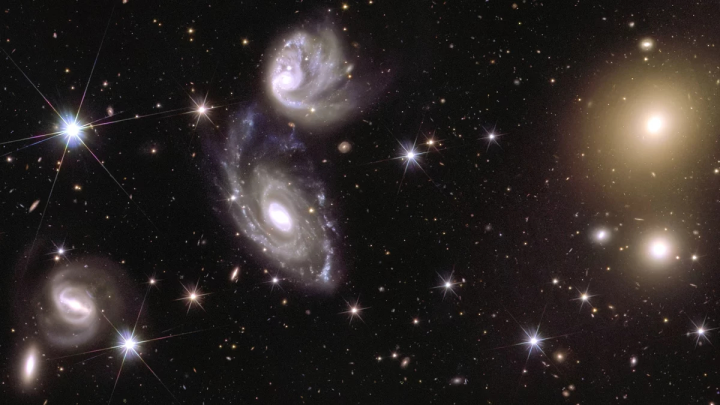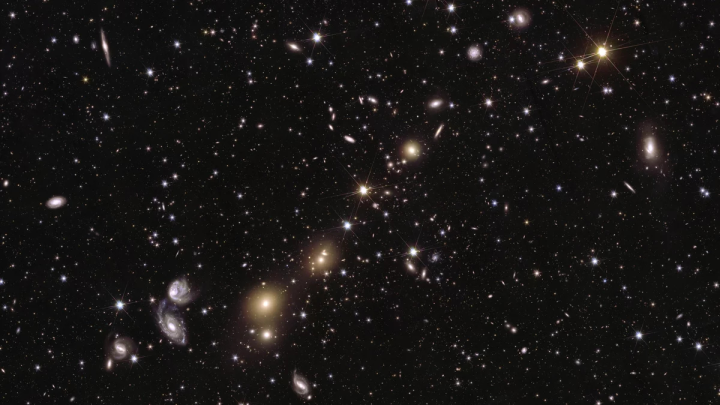When the European Space Agency (ESA)’s Euclid telescope launched last year, it was promised to survey a huge chunk of the sky to help understand the mysteries of dark matter. Now, having overcome some icy challenges in its first year of operation, the ESA has released a first look at the great cosmic atlas that Euclid is building.
Built from 260 observations taken over just two weeks in March and April this year, the first chunk of the map is an enormous mosaic of 208 gigapixels. A video zooming in to areas of the mosaic shows just how detailed the images are of the Southern Sky that covers 14 million distant galaxies, plus tens of millions of stars within our own Milky Way:
“This stunning image is the first piece of a map that in six years will reveal more than one third of the sky. This is just 1% of the map, and yet it is full of a variety of sources that will help scientists discover new ways to describe the Universe,” said Valeria Pettorino, Euclid Project Scientist at ESA.

As well as the video, ESA has selected some particularly striking images from the mosaic, zoomed in to between 12 times and 150 times compared to the entire map chunk. These show beautiful spiral galaxies, vast galaxy clusters, and tiny, dim dwarf galaxies as well.

“We have already seen beautiful, high-resolution images of individual objects and groups of objects from Euclid. This new image finally gives us a taste of the enormity of the area of sky Euclid will cover, which will enable us to take detailed measurements of billions of galaxies,” said Jason Rhodes of NASA’s Jet Propulsion Laboratory (JPL).

The next step for the giant cosmic map is a release planned for March 2025, which will include a preview of extremely detailed images of particular areas of scientific interest called the Euclid Deep Fields. So far, the mission has completed 12% of its large-scale survey, so there will be lots more stunning data to come from this telescope.
“What really strikes me about these new images is the tremendous range in physical scale,” said JPL’s Mike Seiffert. “The images capture detail from clusters of stars near an individual galaxy to some of the largest structures in the universe. We are beginning to see the first hints of what the full Euclid data will look like when it reaches the completion of the prime survey.”
Services Marketplace – Listings, Bookings & Reviews